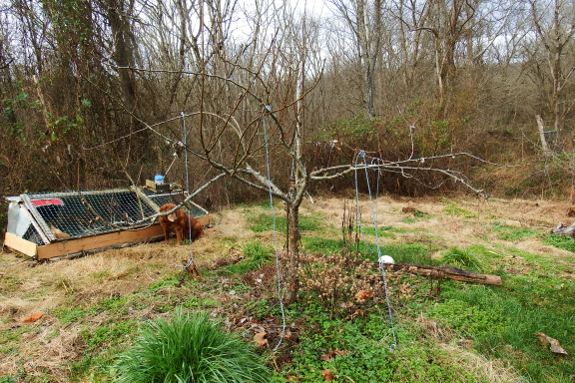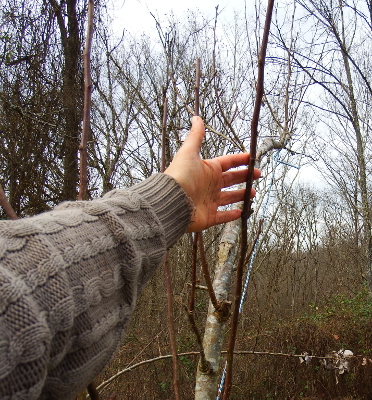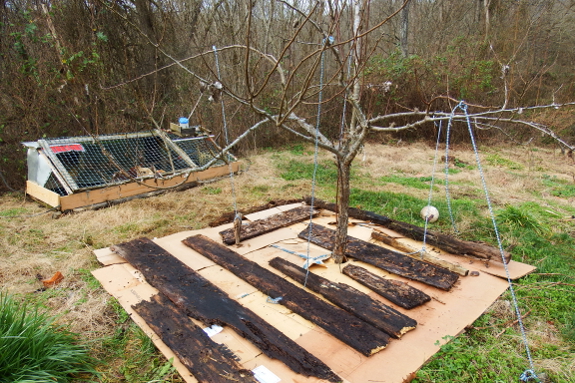
Fertilizing a non-bearing fruit tree

One of our readers wrote in a few weeks ago to ask about fertilizing a non-bearing fruit tree. The truth is that if you did a good job building your soil's organic-matter levels early  on
in the tree's life, it might not need to be fed at all until it sets
fruit. Instead, you can get away with mulching well to keep down weed
competition while also making sure you're only drawing on the
organic-matter interest rather than using up the capital.
on
in the tree's life, it might not need to be fed at all until it sets
fruit. Instead, you can get away with mulching well to keep down weed
competition while also making sure you're only drawing on the
organic-matter interest rather than using up the capital.
It's easy to tell whether
you should have fertilized by assessing the next season's twigs. Did
you see sufficient new growth or did the tree seem to stand still? At
the other extreme, if you see lots of long watersprouts like the one I'm
pointing out in the photo to the right, then you probably
over-fertilized and need to cut back on your feeding campaign next year
so your tree doesn't wear itself out making branches you're just going
to have to prune off.

If I had access to
unlimited resources, I'd mulch heavily with rotted wood chips and/or
autumn leaves for non-bearing trees. In the real world where I'm
carrying most organic matter half a mile on my back, I make do with a
solid cardboard kill mulch weighed down with old boards or punky
firewood. The cardboard directly under the weights will rot away
relatively fast, but the uncovered cardboard sometimes sticks around for
nearly a year, especially when sheltered by a leafy tree canopy. And
the wood eventually breaks down to --- you guessed it --- feed the soil.
The only trouble is I've
now used up all of my Christmas cardboard, both the stash from Mom and
the pick-me-up delivery that Kayla's husband Andy treated me to earlier
this week. (Thank you!) Maybe I can talk them into wrangling a little
more cardboard to finish up the last of my unmulched trees....
Want more in-depth information? Browse through our books.
Or explore more posts by date or by subject.
About us: Anna Hess and Mark Hamilton spent over a decade living self-sufficiently in the mountains of Virginia before moving north to start over from scratch in the foothills of Ohio. They've experimented with permaculture, no-till gardening, trailersteading, home-based microbusinesses and much more, writing about their adventures in both blogs and books.
Want to be notified when new comments are posted on this page? Click on the RSS button after you add a comment to subscribe to the comment feed, or simply check the box beside "email replies to me" while writing your comment.

Several years ago, I watched a gardening show where the teacher, in the fall, took a baseball bat ahd gave a cherry tree 4 good wacks to stimulate flower budding in the spring.
I have used this method with great success over the years.
I had a friend who thought I was crazy but she did sneek out of her house early one fall morning and wacked her tree a few times. The next year she had more apples then she knew what to do with.